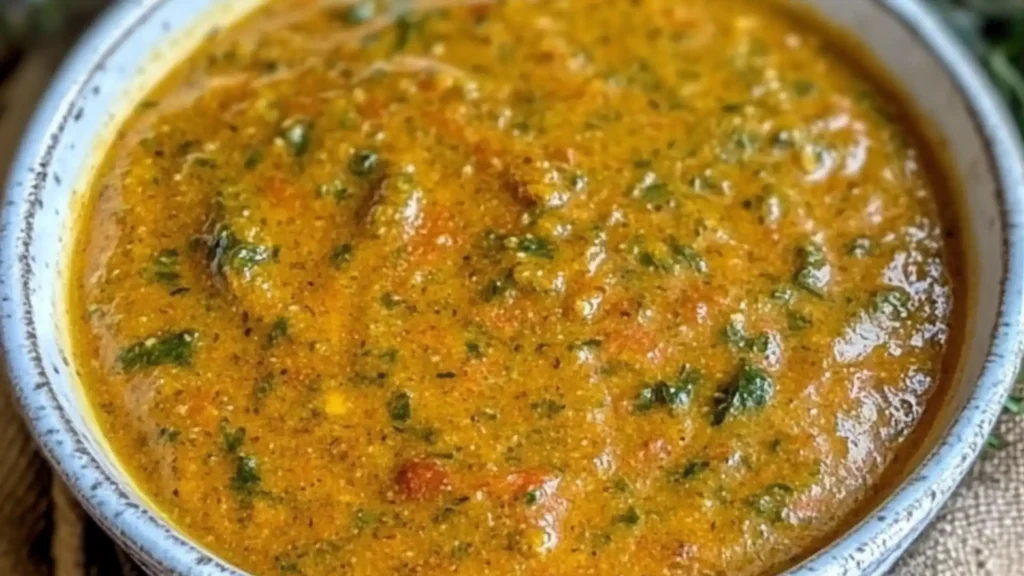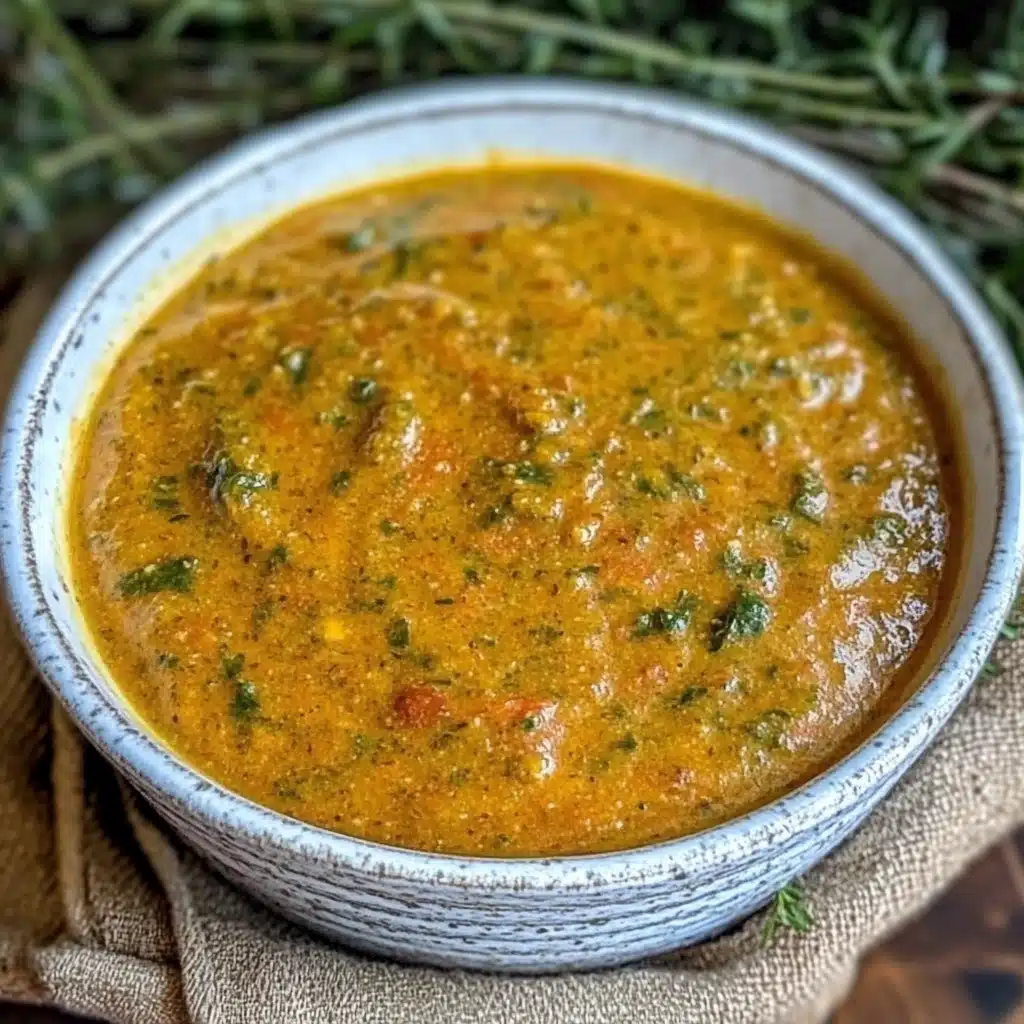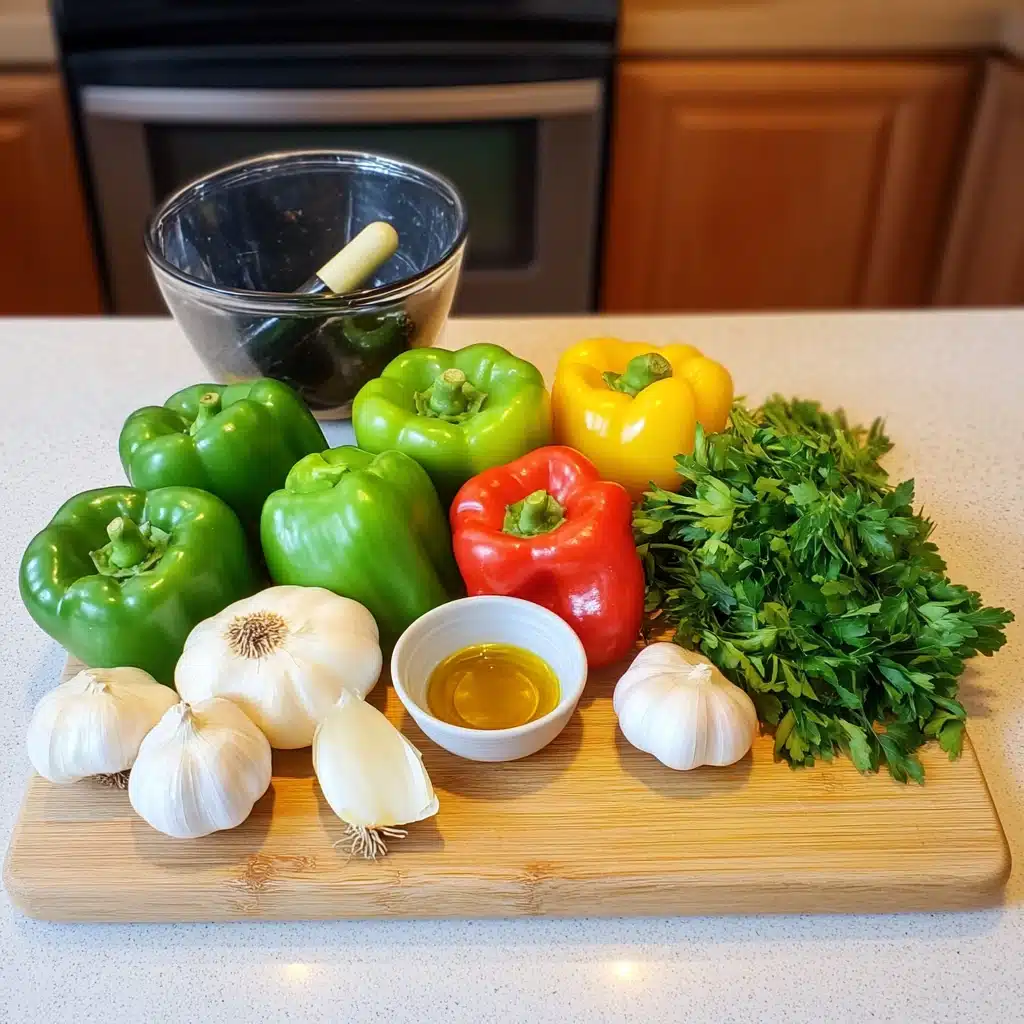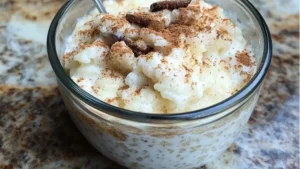If you’ve ever tasted a rich, flavorful Haitian stew or perfectly seasoned meat dish, chances are it was made with Homemade Haitian Epis. This vibrant, fragrant seasoning blend is the secret weapon behind the bold taste of many traditional Haitian food recipes. It’s used as a marinade, base, and flavor-booster—and once you learn to make it, you’ll never want to cook without it.
Whether you’re exploring Caribbean cuisine or simply looking to elevate your meals with authentic, natural flavors, learning how to make Haitian epis is a game changer. In this guide, you’ll discover the full Haitian epis paste recipe, its traditional ingredients, and how to use it in everyday dishes like Brown Stew Chicken, rice, and even fried vegetables.
Let’s dive into the soul of Haitian seasoning.
Table of Contents
What Is Haitian Epis and Why Is It So Important?
Epis Haitian seasoning is a vibrant green paste made by blending a mix of aromatics, herbs, and spices. It’s not just a seasoning—it’s the backbone of Haitian cuisine. Similar in function to sofrito in Latin American cooking or green seasoning in the Caribbean, epis is used to marinate meat, flavor soups, rice, stews, and more.
It delivers bold depth, balancing savory, herbal, and tangy notes. Traditionally, Haitian families prepare a fresh batch weekly or biweekly, keeping it refrigerated or frozen for regular use. While each family may have its own secret twist, the base remains the same: garlic, scallions, bell peppers, thyme, and parsley.
Want another classic Haitian staple? Don’t miss this Haitian Rice and Beans Instant Pot recipe for the perfect meal pairing.
Traditional Haitian Epis Ingredients You’ll Need
The key to great Haitian epis ingredients is freshness. Here’s what you’ll typically need:
- 1 large green bell pepper, roughly chopped
- 1 small red bell pepper, chopped (for color and sweetness)
- 1 bunch green onions (scallions), chopped
- 1 medium yellow onion, chopped
- 8–10 garlic cloves, peeled
- 1 cup fresh parsley leaves, stems removed
- 1 tablespoon fresh thyme leaves (or 1 tsp dried thyme)
- 1 bouillon cube (Maggi or similar, optional)
- 1 Scotch bonnet pepper, seeds removed (optional for spice)
- Juice of 1 lime (or 2 tablespoons white vinegar)
- 2–3 tablespoons olive oil or neutral oil
- Salt and black pepper, to taste
- Water, as needed for blending
These simple ingredients create a bright, herbaceous blend that’s versatile and packed with flavor. Similar to how Simple Avocado Feta Dip elevates your dips, epis transforms your savory dishes from the ground up.
Equipment Needed to Make Haitian Epis Paste at Home
To prepare your homemade Haitian epis, make sure you have the following:
- High-speed blender or food processor
- Large jar or airtight container for storage
- Measuring cups and spoons
- Knife and cutting board
- Spatula or spoon to scrape the sides of the blender
Tip: Use wide-mouth mason jars to make scooping your epis easier when you’re in a rush.
How to Make Haitian Epis Paste Step by Step
Step 1: Prep the Ingredients
Rinse all fresh herbs and vegetables thoroughly. Roughly chop them so they blend more easily.
Step 2: Add to Blender
Add bell peppers, scallions, onion, garlic, parsley, thyme, and Scotch bonnet pepper (if using) into your blender.
Step 3: Add Flavor Enhancers
Add lime juice (or vinegar), bouillon, salt, black pepper, and oil.
Step 4: Blend to a Paste
Pulse the blender a few times to combine. Add water a tablespoon at a time as needed to help the mixture blend. You’re aiming for a thick but smooth paste.
Step 5: Adjust Seasoning
Taste and adjust with more salt, vinegar, or oil as needed. Remember, this is a seasoning base—it should be bold.
Step 6: Store Properly
Transfer to a clean jar, seal tightly, and refrigerate. Let it sit at least 2 hours before using for best flavor.
How to Store and Preserve Your Epis Haitian Seasoning
Proper storage ensures your epis recipe lasts for weeks. Here’s how:
- Refrigerator: Store in a glass jar for up to 2 weeks. Always use a clean spoon to avoid contamination.
- Freezer: Pour into ice cube trays and freeze. Once frozen, transfer cubes to a zip-top bag and use as needed. Keeps up to 3 months.
- Oil-top seal: Add a thin layer of oil on top of the jar to keep air out and extend freshness.
Want more ways to stock your fridge with flavor? Try our Whipped Parmesan and Honey Pecan Cheese Dip—a savory-sweet spread that’s also make-ahead friendly.
Tips to Perfect Your Haitian Epis Recipe
- Fresh is best: Use fresh herbs and produce whenever possible.
- Use neutral oil: Avoid strong-flavored oils that overpower the blend.
- Vinegar vs. Lime: Either provides acidity, but vinegar preserves longer.
- Control the heat: Add or omit Scotch bonnet pepper depending on your spice preference.
- Consistency matters: Keep it smooth for marinades, chunkier for stews.
For another smart kitchen trick, see how we use creamy texture to upgrade Cottage Cheese Egg Salad—great for lunch prep!
Variations: Regional or Family Twists on Haitian Epis Paste
Just like every family has its own chili or spaghetti sauce recipe, Haitian epis paste varies by household. Some common variations include:
- Green Epis: Extra parsley and green peppers for a more herbaceous version
- Spicy Epis: More Scotch bonnet or habanero for serious heat
- Coconut Epis: A tablespoon of coconut oil for added richness and aroma
- Bouillon-Free: Skip the bouillon for a low-sodium, whole-food version
Want to experiment with more Caribbean creativity? Don’t miss Pumpkin Chicken Chili for another bold dish with sweet-heat flavor.
How to Use Homemade Haitian Epis in Everyday Cooking
This seasoning is incredibly versatile. Use it to:
- Marinate chicken, pork, or fish
- Sauté it as a base for stews and soups
- Mix into beans or rice dishes
- Use as a spread on grilled veggies or meats
- Add to sauces or dressings for extra punch
It’s the essential base for Haitian classics like Brown Stew Chicken, Legume (vegetable stew), and Fried Pork (Griot). You can even stir it into scrambled eggs or roasted potatoes for a flavor boost.
Looking for the perfect side? Pair your epis-seasoned dish with Garlic Parmesan Chicken Skewers for a vibrant, easy dinner.
Recipes That Pair Perfectly with Haitian Epis
Here are some recipes you can enhance with your freshly made epis:
- Instant Pot Haitian Rice and Beans
- Garlicky Kale with White Beans and Lemon
- Vegetarian Pasta Primavera
- Cucumber Shrimp Salad
- Fried Vegetables with Dipping Sauce
Each one is a great canvas for your homemade Haitian epis.
Haitian Epis vs. Haitian Pikliz Sauce: What’s the Difference?
Though they both pack a flavorful punch, Haitian epis paste and Haitian pikliz sauce are very different.
- Epis is a blended seasoning used in cooking and marinating.
- Pikliz is a fermented, spicy slaw made from cabbage, carrots, peppers, and vinegar—used as a condiment.
They’re both essential in Haitian kitchens and often used together: one to season the food, the other to brighten and balance it.
Common Mistakes to Avoid When Making Epis Paste
- Not blending enough: Chunky epis doesn’t distribute well in marinades.
- Too much water: Makes the paste watery and dilutes flavor.
- Improper storage: Leaving it uncovered or double-dipping shortens shelf life.
- Over-seasoning: Epis is concentrated—use just a spoonful or two per pound of meat.
For an ultra-convenient seasoning method, try freezing small portions using an ice cube tray. You’ll always have some ready to go.
Frequently Asked Questions About Epis Haitian Seasoning
Can I freeze Haitian epis?
Yes! Freeze in small portions to extend shelf life up to 3 months.
How much epis should I use when cooking?
About 1–2 tablespoons per pound of meat or per pot of stew is typical.
Is epis spicy?
It can be. The Scotch bonnet pepper is optional—omit or reduce to control heat.
Do I need a food processor?
A blender works just fine. Add liquid gradually to help it process smoothly.
Can I skip the oil?
You can, but oil helps preserve the epis and improves texture.
Final Thoughts: Why Every Pantry Needs Haitian Epis
Homemade Haitian epis is the kind of recipe that transforms your everyday cooking. With just a few minutes of prep and a handful of fresh ingredients, you get a seasoning blend that adds flavor, depth, and authenticity to everything it touches.
Use it once, and it’ll quickly become a staple in your fridge or freezer. Whether you’re building classic Haitian dishes or experimenting with your own recipes, epis will be your go-to flavor enhancer.
PrintThe Essential Homemade Haitian Epis Recipe for Every Kitchen
- Total Time: 15 minutes
- Yield: 2 cups 1x
- Diet: Vegan
Description
Homemade Haitian Epis is the vibrant green seasoning paste that brings bold, authentic flavor to Haitian cuisine. Made with fresh herbs, garlic, peppers, and spices, this all-purpose seasoning acts as the foundation for countless dishes—from stews and rice to marinades and soups. Once you make it, you’ll never cook without it again.
Ingredients
- 1 large green bell pepper, roughly chopped
- 1 small red bell pepper, chopped (for color and sweetness)
- 1 bunch green onions (scallions), chopped
- 1 medium yellow onion, chopped
- 8–10 garlic cloves, peeled
- 1 cup fresh parsley leaves, stems removed
- 1 tablespoon fresh thyme leaves (or 1 teaspoon dried thyme)
- 1 bouillon cube (Maggi or similar, optional)
- 1 Scotch bonnet pepper, seeds removed (optional)
- Juice of 1 lime (or 2 tablespoons white vinegar)
- 2–3 tablespoons olive oil or neutral oil
- Salt and black pepper, to taste
- Water, as needed for blending
Instructions
- Prep Ingredients: Rinse all herbs and vegetables thoroughly. Roughly chop them for easier blending.
- Add to Blender: Combine bell peppers, scallions, onion, garlic, parsley, thyme, and Scotch bonnet in a blender or food processor.
- Add Seasonings: Add lime juice or vinegar, bouillon (if using), salt, pepper, and oil.
- Blend to a Paste: Pulse and gradually add water until the mixture forms a smooth but thick paste.
- Adjust Seasoning: Taste and tweak with more salt, vinegar, or oil as needed.
- Store: Transfer epis to a clean jar, seal tightly, and refrigerate for at least 2 hours before using for best flavor.
Notes
- Fresh is best: Use fresh herbs and vegetables for maximum flavor.
- Neutral oil: Choose light-tasting oil to avoid overpowering the seasoning.
- Vinegar vs. Lime: Vinegar helps preserve epis longer; lime adds bright freshness.
- Storage: Refrigerate for up to 2 weeks or freeze up to 3 months in ice cube trays.
- Variation ideas: Add extra parsley for green epis, more peppers for spicy epis, or coconut oil for richness.
- Usage: Use 1–2 tablespoons per pound of meat or per pot of stew.
- Prep Time: 15 minutes
- Cook Time: 0 minutes
- Category: Condiment
- Method: Blended
- Cuisine: Haitian
Nutrition
- Serving Size: 1 tablespoon
- Calories: 20
- Sugar: 0g
- Sodium: 75mg
- Fat: 2g
- Saturated Fat: 0g
- Unsaturated Fat: 2g
- Trans Fat: 0g
- Carbohydrates: 1g
- Fiber: 0g
- Protein: 0g
- Cholesterol: 0mg
Keywords: Haitian Epis, Homemade Haitian Seasoning, Haitian Green Seasoning, Haitian Marinade, Caribbean Sofrito, Haitian Cooking Base, Epis Paste, Haitian Recipes, Vegan Seasoning Paste, Caribbean Condiment







